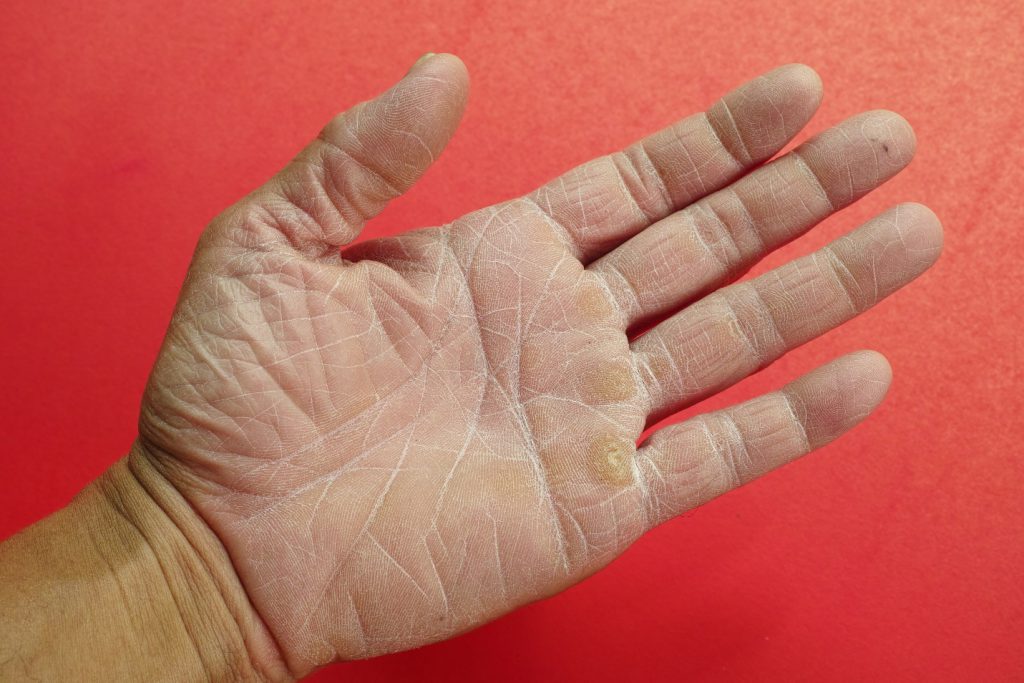
Hand Care 101: 3 Helpful Tips for Dealing with Dry Skin on Hands
For healthcare professionals, the combination of proper hand hygiene and outside factors, such as weather, can cause skin to become dry and irritated. Learning how to care for your hands can help protect them from damage and discomfort.
No skimping on hygiene
The most important way to prevent the spread of infection and disease is by practicing good hand hygiene. Both the World Health Organization (WHO) and the Centers for Disease Prevention and Control (CDC) have guidelines and recommendations for reducing the transmission of pathogens to patients and other healthcare workers. There’s even scientific research behind the “why and how” of handwashing.
You can clean your hands two ways, depending on how soiled they are:
- If your hands are not visibly soiled, rub them with an alcohol-based sanitizer for routine hand hygiene. Sanitizer can quickly reduce the number of pathogens, and may be more gentle on the skin.
- Soap and water must be used if your hands are visibly dirty, visibly soiled with blood or body fluids, and after using the toilet. Soap and water should also be used if there is any suspicion that you may have been exposed to spore-producing pathogens, such as Clostridium difficile (diff).
As a CNA, one of the first things you learned was proper hand hygiene. If you need a quick review, or want to teach others, the CDC has good instructions and tips, including humming the “Happy Birthday” song twice to know you’ve washed for 20 seconds. In that time, about 90% of bacteria can be removed.
Why is hand care is important?
During a typical shift, nurses can wash their hands up to 100 times! Wearing powdered latex or nitrile gloves can also irritate skin. It’s a challenge to prevent skin from becoming dry, chapped. Outside the workplace, you can be exposed to cold, windy weather, or to cleaning products that you use at home.
Hand care is essential to keep your skin healthy. Skin is the barrier to infection. If it becomes cracked, bacteria can get in, putting you and others at risk. One study found that nurses with dry, damaged hands carried more pathogens, including Staphylococcus bacteria, than nurses with undamaged skin.
It starts with how you wash
- 1
Use cool or tepid water
It’s the soap and friction of good handwashing that kills germs. Hot water strips away the skin’s natural oils, causing even more damage.
- 2
Don’t rub them when you’re drying them
The rough surface of a paper towel can aggravate your skin, so just use it to blot them. Wet hands are more likely to spread pathogens, so take about 20 seconds to dry them well.
- 3
If possible, avoid dryers that blow hot air
Hot air can do as much damage as a rough paper towel. If you’re using an air dryer, it takes 30-45 seconds to dry hands.
Hand sanitizer and irritant contact dermatitis
Hand sanitizers are commonly used in medical settings for a quick way to clean hands between interactions with clients and for non-visible soil. In April 2019, the U.S. Food and Drug Administration (FDA) updated its regulation about what active ingredients can be in hand sanitizers, so consumers can use them safely.
Ethyl alcohol is the usual main ingredient in hand sanitizers; FDA regulations state it has to be more than 60% of the solution in order to effectively kill germs. Although alcohol seems like a harsh chemical, it can actually be less damaging to skin, because it does not require friction to apply and it dries quickly.
However, if you are prone to dry skin, excessive use of hand sanitizer can lead to irritant contact dermatitis. The most common symptoms are red hands, with cracks and fissures when the dryness is severe. Use soap and water instead of the sanitizer. See your physician if the dermatitis doesn’t resolve or gets worse.
Carry and use a heavy-duty moisturizer
A light hand lotion isn’t able to do much to protect and repair your skin. You need a cream or ointment that can stand up to frequent hand washings. Carry a tube in your pocket and apply it frequently. Some examples of heavy-duty moisturizers are (in alphabetical order) Aveeno Intense Relief Hand Cream, Burt’s Bees Shea Butter Hand Repair Cream, Eucerin Advanced Repair Hand Cream, and Neutrogena Norwegian Formula Hand Cream. Find one that works best for you and develop the habit of using it during your shift.
Keep up your routine during your days off
When you’re not on the job, don’t stop using hand cream. You probably won’t need to apply it as often, but don’t skip the chance to help your hands recover and heal.
When the weather is cold, raw, or windy, wear gloves to protect your hands. If you’re a gardener, be sure to wear gloves when working outdoors. After removing your gloves, apply lotion.
Another great hand care technique is to apply a coat of petroleum jelly before going to bed. Cover your hands with cotton gloves or old cotton socks. Sleep with them on and during the night your hands will get maximum moisturizing.
When you take time to care for your hands, you’ll feel better at work or wherever you go. As a healthcare professional, you can’t avoid hand hygiene. But you can avoid dry, damaged skin by starting a hand care routine.
 Reviewed by
Reviewed by 